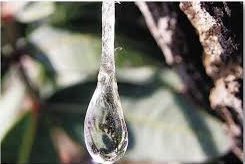 In a follow-on to other recent discussions concerning mastic gum for oral health and allergic/asthmatic presentations, a look at studies surrounding the use of mastic gum (Pistacia lentiscus) for management of blood sugar and cholesterol is warranted. The potential benefits of chios mastic gum have long been known to extend far beyond treatment of Helicobacter pylori infection, with historic uses ranging from treatment of poor digestion and oral health maintenance, to the treatment of infection including tuberculosis.[i] However in the 18th and 19th century when mastic products experienced their greatest trade and fame, conditions such as dysglycaemia and dyslipidaemia were not a public health concern. Only in the early 1900’s was cholesterol coming to medical awareness, with discoveries by familiar names such as Virchow and others of circulating lipoproteins and deposition of lipids in atherosclerotic plaques.[ii]
In a follow-on to other recent discussions concerning mastic gum for oral health and allergic/asthmatic presentations, a look at studies surrounding the use of mastic gum (Pistacia lentiscus) for management of blood sugar and cholesterol is warranted. The potential benefits of chios mastic gum have long been known to extend far beyond treatment of Helicobacter pylori infection, with historic uses ranging from treatment of poor digestion and oral health maintenance, to the treatment of infection including tuberculosis.[i] However in the 18th and 19th century when mastic products experienced their greatest trade and fame, conditions such as dysglycaemia and dyslipidaemia were not a public health concern. Only in the early 1900’s was cholesterol coming to medical awareness, with discoveries by familiar names such as Virchow and others of circulating lipoproteins and deposition of lipids in atherosclerotic plaques.[ii]
Enter stage left, mastic gum!
Starting with the basics of cell cultures and experiments, solutions of Chios mastic gum have been shown to be effective in protecting human low density lipoproteins (LDL) from oxidation, more so than other natural gums and resins including dammar resin, acacia gum, tragacanth gum, and storax gum.[iii] Animal models of diabetes have shown mastic gum to have an effect of decreasing serum glucose and triglycerides as well as partially reversing hepatic steatosis.[iv] Interestingly, the lower (rather than higher) doses of mastic gum led to greater improvements in glucose and lipids, as well as a reduction of interleukin-6 (IL-6) compared to the control group. At the end of the study, the low-dose mastic gum group was observed to have significant improvements in serum total cholesterol levels (p < 0.001), LDL-C (p = 0.0045), triglycerides (p < 0.001) and HDL-C levels (p < 0.014).
The upregulation of IL-6 has been shown to lead to insulin resistance in hepatocytes via NF-κB mediated pathways,[v] thus the reduction in IL-6 may be one mechanism by which mastic gum improves glucose levels. It is hypothesized that improvements in hepatic steatosis are due to a multitude of effects of mastic on inflammation, antioxidant status, and the glucose-lowering properties. Improvements in liver enzymes (aminotransferase [ALT], aspartate aminotransferase [AST], alkaline phosphatase [ALP]) as well as bilirubin have been observed in settings of carbon tetrachloride induced hepatic damage with mastic gum as well.[vi] Extracts of oil from Pistacia lentiscus, high in essential fatty acids, vitamin E and polyphenols, have also been shown to have hepatoprotective effects in settings of toxin-induced liver dysfunction.[vii]
Human studies with mastic gum
In a human population, some with issues such as mild hyperglycaemia and hyperlipidaemia, ingestion of 5 g of mastic gum daily for a period of 18 months was found to significantly decrease serum total cholesterol, LDL, total cholesterol/high density lipoprotein (HDL) ratio, lipoprotein (a), apolipoprotein (Apo) A-1, Apo B, aspartate aminotransferase (AST), alanine aminotransferase (ALT), and gamma-glutamyltransferase (GGT) levels.[viii] At lower doses, a benefit was only seen to glucose levels. No side effects were observed in either the low or high dose groups.
A second study investigating the impact of mastic gum on a health population of adults having total cholesterol levels of >200mg/dL also produced similar findings.[ix] Reductions in total cholesterol and fasting blood glucose (11.5 mg/dl and 4.5 mg/dl [p < 0.05 for both] respectfully) were seen with intake of 330mg of crude mastic gum three times daily. Again, no adverse effects were seen. A stronger effect was seen in individuals with a body mass index >25 kg/m2. Clearly these studies suggest that mastic gum may be an additional therapy to consider for management of issues such as elevated cholesterol, insulin resistance, and liver inflammation and fatty changes associated with metabolic syndrome, or any one of these elements associated with its presentation.
References
[i] Ierapetritis D. The Geography of the Chios Mastic Trade from the 17th through to the 19th Century. Ethnobotany Research and Applications. 2010 Jun 19;8:153-67. View Full Paper
[ii] Gotto AM Jr. Evolving concepts of dyslipidemia, atherosclerosis, and cardiovascular disease: the Louis F. Bishop Lecture. J Am Coll Cardiol. 2005 Oct 4;46(7):1219-24. View Full Paper
[iii] Andrikopoulos NK, et al. Biological activity of some naturally occurring resins, gums and pigments against in vitro LDL oxidation. Phytotherapy research. 2003 May 1;17(5):501-7. View Abstract
[iv] Tzani A, et al. Hypolipidemic, hepatoprotective and anti-inflammatory role of Chios Mastic gum in Streptozotocin-induced diabetic mice with fatty liver disease. Hellenic J Atherosc. 2016 Oct-Dec;7(4):161-173. View Full Paper
[v] Senn JJ, et al. Interleukin-6 induces cellular insulin resistance in hepatocytes. Diabetes. 2002 Dec;51(12):3391-9. View Full Paper
[vi] Janakat S, Al-Merie H. Evaluation of hepatoprotective effect of Pistacia lentiscus, Phillyrea latifolia and Nicotiana glauca. J Ethnopharmacol. 2002 Nov;83(1-2):135-8. View Full Paper
[vii] Klibet F, et al. Oxidative stress-related liver dysfunction by sodium arsenite: Alleviation by Pistacia lentiscus oil. Pharm Biol. 2016;54(2):354-63. View Abstract
[viii] Triantafyllou A, et al. Chios mastic gum modulates serum biochemical parameters in a human population. J Ethnopharmacol. 2007 Apr 20;111(1):43-9. View Full Paper
[ix] Kartalis A, et al. Effects of Chios mastic gum on cholesterol and glucose levels of healthy volunteers: A prospective, randomized, placebo-controlled, pilot study (CHIOS-MASTIHA). Eur J Prev Cardiol. 2016 May;23(7):722-9. View Abstract





